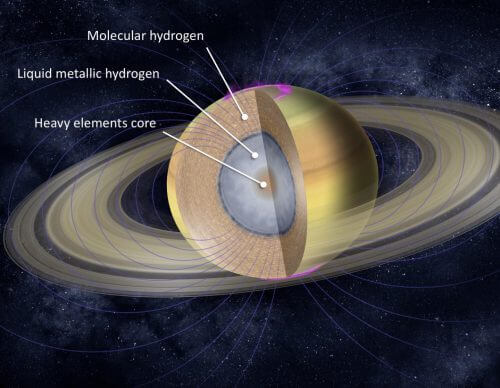Weizmann Institute of Science scientists led one of the last experiments of the flagship mission of NASA and the European Space Agency

Like an opera heroine, who produces her most heavenly sounds just before she says goodbye to the audience for the last time, the Cassini spacecraft also embarked on its "Grand Finale" - the official name of the research mission after which it plunged into the atmosphere of the planet Saturn and burst into flames. The swan song of the research probe from the creator of NASA and the European Space Agency, named after Giovanni Domenico Cassini - a 17th-century astronomer from the homeland of opera - was particularly virtuosic: like a skillfully threaded thread to a needle from a distance of one and a half billion kilometers, it was inserted The probe traveled through the space between Saturn and its ring system and circled the planet 22 times from pole to pole. Prof. Yohai Caspi from the Department of Earth and Planetary Sciences and his partner in the research group, staff scientist Dr. Eli Galanti, led one of the experiments of the separation mission and calculated for the first time the depth of the atmosphere of the second largest planet in the solar system. The scientists found that the jet streams on Saturn, the strongest in the solar system with winds reaching a strength of about 1,500 kilometers per hour, penetrate to a depth of 9,000 kilometers below the planet's cloud cover. Their research partners from Italy and the United States discovered that the rings associated with Saturn are extremely young - 100 million years old at the most. These findings are published today in the scientific journals Science and Geophysical Research Letters.
In the months before the "Grand Finale", opinions were divided on how to end Cassini's mission after 20 years in space. One thing was clear: the spacecraft cannot remain in the Saturn system for fear of falling on one of the moons and causing its contamination. A prominent option that was considered was to let the probe move outside the solar system similar to the Voyager spacecraft that continues to cruise around the universe 40 years after it was first launched. Despite the temptation, the first measurements from another probe - Juno, which has been orbiting Jupiter since July 2016 - tipped the scales. Juno's successful measurements led to the decision to send Cassini on a final, daring mission inspired by it. Prof. Caspi and Dr. Galanti, who lead one of the main experiments in the Juno space mission, were called to the flag in order to find out how deep the strong jet streams that characterize Saturn are. Prof. Caspi says: "NASA was eager to reproduce the success of Tzedek. It was a big challenge - you come up with a method that worked for you in one place, and you have to put it to the test in a short time in another, more complex place; It is complex both due to Saturn's unique properties - for example its degree of flatness - and also because the measurements were less successful, because unlike Juno, the instruments on Cassini were not designed for this".
Similar to Juno and Jupiter, the calculation of the depth of Saturn's winds and the dimensions of Saturn's atmosphere was made possible thanks to the combination of the measurement of the gravity field through the Doppler shift of a radio wave sent from Cassini to Earth, and the scientists' theoretical model connecting the gravity field to the wind field. "Unlike Jupiter, we had to cooperate with the groups that studied the internal structure of Saturn. Together we discovered that the atmosphere reaches a depth of 9,000 kilometers - three times more than Jupiter. On both planets, the figure coincides with the depth at which the magnetic field becomes significant," says Dr. Galanti. "In other words, we not only found the depth of the winds, but we also came to an understanding of the importance of the magnetic field in stopping them. Our theory 'worked' twice, which makes it much stronger: in both cases we took the winds on the surface, threw them inward in a direction parallel to the axis of rotation - and found that they fade at the point where the magnetic field is strong enough to stop the flow."
memory rings
The most famous hallmark of Saturn is undoubtedly the rings that surround it, which are about 20 meters thick on average, and are mainly composed of water in a state of ice and cosmic dust that has accumulated on them over the years. There is currently no scientific consensus on how these rings were formed, but following Cassini's latest measurements it was discovered that the rings are 10 to 100 million years old - in the blink of an eye compared to the formation of the solar system about 4.5 billion years ago. The dinosaurs that died off the face of the earth 65 million years ago apparently "knew" a different version of Saturn - without the iconic ring system.
#מספרי_מדע: The winds raging in the atmosphere of the planet Saturn reach a speed of 450 meters per second - seven times faster than the speed of a strong hurricane on Earth.
More of the topic in Hayadan:
